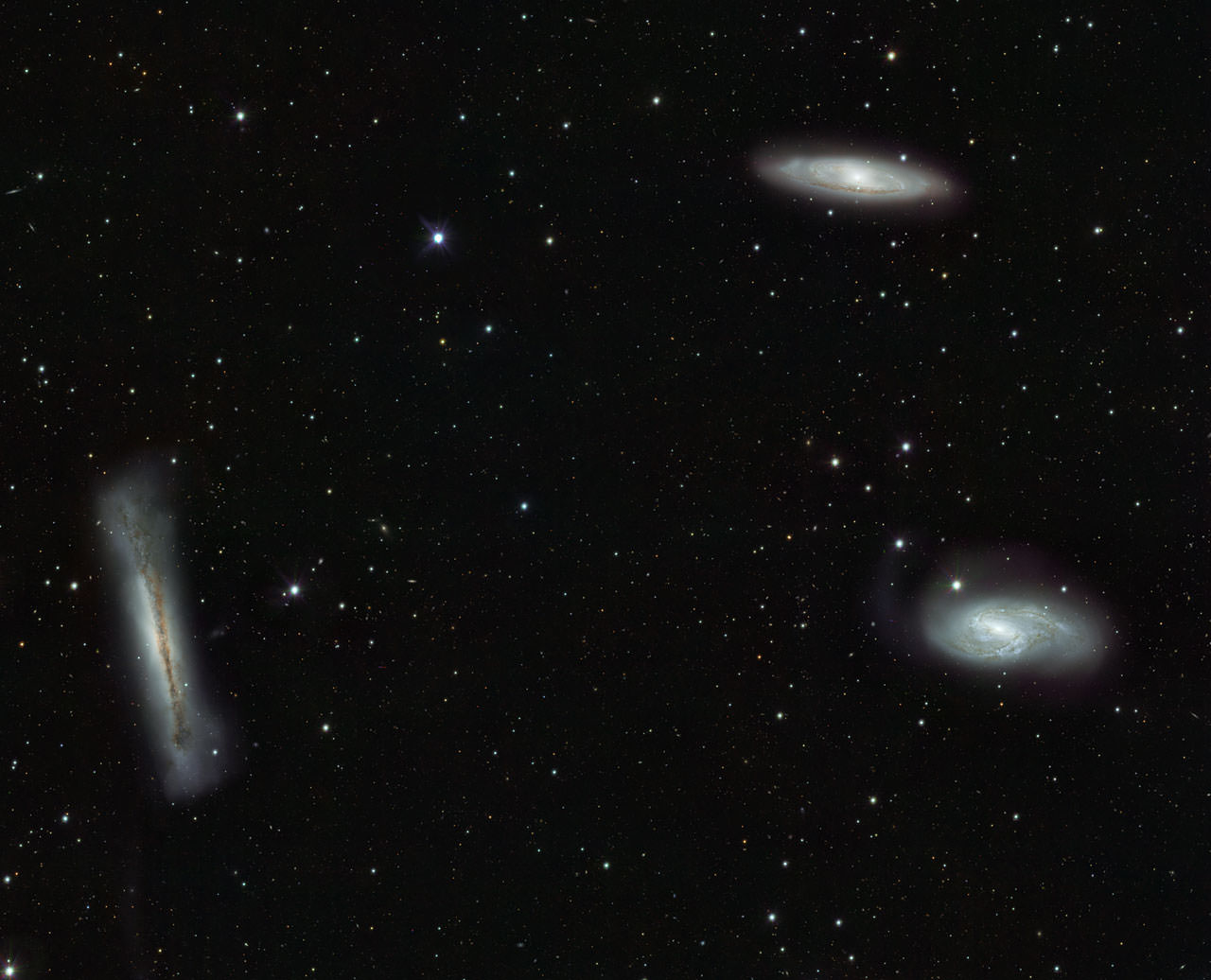[/caption]
Here’s a brand new, magnificent look at the Leo Triplet — a group of interacting galaxies about 35 million light-years from Earth. This wide field of view comes courtesy of the VLT Survey Telescope (VST) at the Paranal Observatory. It has a field of view twice as broad as the full Moon — which is unusual for a big telescope – and the FOV is wide enough to frame all three members of the group in a single picture. But there’s also a great new view of galaxies in the background, as the VST also brings to light large numbers of fainter and more distant galaxies, some through the wonders of microlensing.
Microlensing is a gravitational lensing phenomenon where the presence of a dim but massive object can be inferred from the effect of its gravity on light coming from a more distant star. If, due to a chance alignment, the dim object passes sufficiently close to our line of sight to the more distant star, its gravitational field bends the light coming from the background star. This can lead to a measurable increase in the background star’s brightness. As microlensing events rely on rare chance alignments, they are usually found by large surveys that can observe great numbers of potential background stars.
One of the science goals of the VST is to search for much fainter objects in the Milky Way, such as brown dwarf stars, planets, neutron stars and black holes, and microlensing is helpful in finding these elusive objects.
All three of the big, main galaxies seen here are spirals like our own Milky Way galaxy, even though this may not be immediately obvious in this image because their discs are tilted at different angles to our line of sight. NGC 3628, left, is seen edge-on, while the Messier objects M 65 (upper right) and M 66 (lower right), on the other hand, are inclined enough to make their spiral arms visible.
Get more information and see a larger version of this image at the ESO website.

